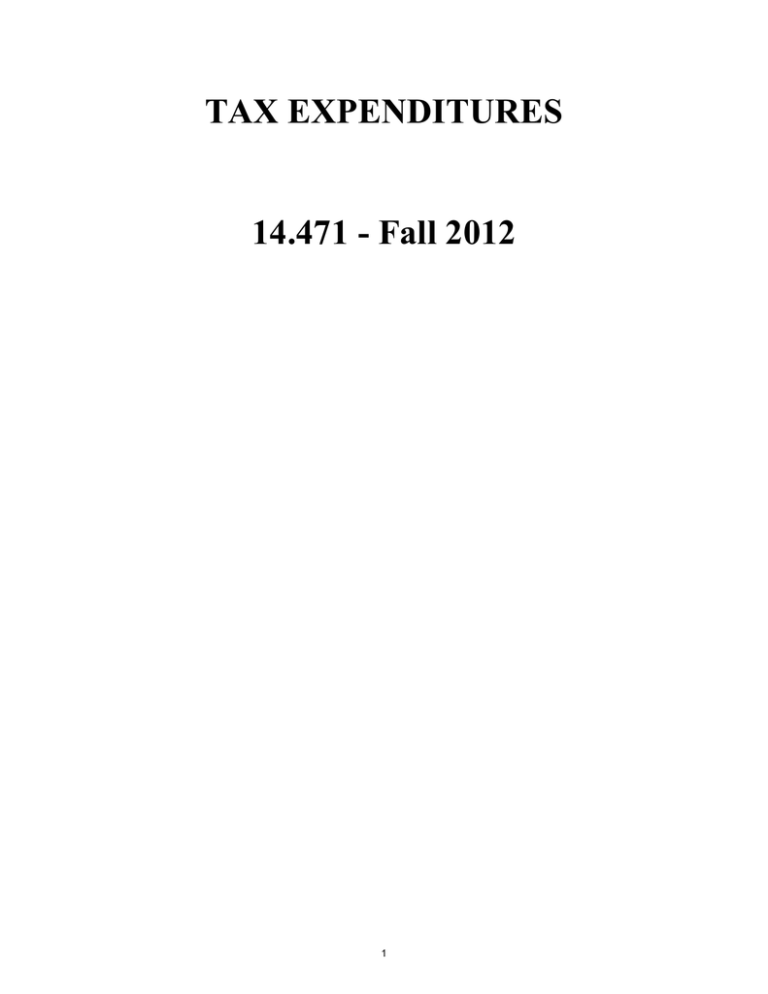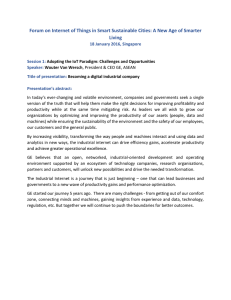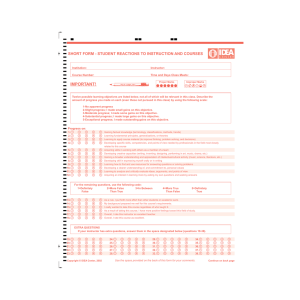TAX EXPENDITURES 14.471 - Fall 2012 1
advertisement

TAX EXPENDITURES
14.471 - Fall 2012
1
Base-Broadening Strategies for Tax Reform:
Eliminate Existing Deductions
Retain but Scale Back Existing Deductions
o Income-Related Clawbacks
o Cap on Rate for Deductions
Expand Definition of AGI & Taxable Income
o Imputed Rent on Homes
o Employer Provided Health Insurance
Itemized Deductions with Largest Revenue Cost, FY2010
($Billion)
Employer-Provided Health Insurance
Pension Contributions & Earnings
Mortgage Interest Deduction
State/Local Income Taxes
Charitable Giving
State/Local Property Taxes
Source: OMB, 2011Budget.
$159.9
142.0
92.2
33.9
44.2
18.9
Key Questions:
* How Responsive are Taxpayer Choices to Variation in
After-Tax Price of Activity (Health Insurance, Housing,
Charity)?
* What are the Efficiency Costs of Allowing Tax
Deductions and Exclusions?
2
General Problem of Tax Rate Endogeneity:
Illutration Using Charitable Giving. Assume Underlying
Demand Model is Log-linear:
ln Gi = α + β*ln Yi + γ*ln (1-τi) + δ*Xi + εi
Marginal Tax Rate τi = Ti'(Yi - Gi) where T(.) is the tax
function that depends on gross income minus deduction
for charitable gifts. Problem is that εi is correlated with
Gi, which in turn is correlated with τi. Larger values of
error term translate into larger deductions, hence (if tax
schedule is progressive) lower marginal tax rate, hence
larger value of (1-τi). Thus there is a spurious positive
correlation between Gi and (1-τi) leading to an upward
bias in the estimates of γ. Since this parameter is the
price elasticity of demand for charitable giving it is
expected to be negative; the positive bias will therefore
lead to an underestimate of the price elasticity.
How do we solve this? Use "first dollar marginal tax
rate" for instrument. Simple example (can be improved
upon): calculate τi* = Ti'(Yi) for all taxpayers. Note τi* is
correlated with τi but it is NOT affected by the spurious
correlation channel noted above. Some studies estimate
reduced form regressions replacing τi with τi* in the
regression equation; better strategy uses IV.
3
Illustration: Elasticity of Charitable Giving with respect to
"Tax Price" (1-τ): W. Randolph, "Dynamic Income,
Progressive Taxes,and the Timing of Charitable
Contributions," JPE 1995 709-738.
Estimates Almost Ideal Demand System with current and
future income, current and future tax price variables.
Dependent variable is share of income devoted to
charitable gifts. Let Yit = "modified after-tax income"
(correcting for inframarginal charitable donations at
higher MTR).
(1-τit)*Git/Yit = δ0t + δ0i + Xitβ + δ1*ln[(1-τit)/(1-τi*)]
+ δ2*ln (1-τi*) + δ3*ln[Yit/Yi*] + δ4*ln Yi*
+ δ5*ln[(1-τit)/(1-τi*)] 2
+ δ6*ln (1-τi*)*ln(1-τit) + εit n
One important measurement issue: how to include gifts of
appreciated assets in tax rate calculation (problem: if part
of the charitable donation is made up of appreciated stock,
the tax benefit is even larger than for a cash gift). Set
(1-τit) = 1 - MTRit - (gift share of appreciated
assets)*(effective tax rate on long-term capital gains)
Sample of 12000 taxpayers, six years of panel data (1979,
80, 83, 84, 85, 88). Spans significant change in marginal
4
tax rates (TRA86) so there is "transitory" tax rate
variation. Few demographic variables on tax returns
(married, number of exemptions, age (sometimes age > 65
dummy variable). Estimation sample: 51,146 returns.
"Permanent price elasticity": both τit and τi* change by the
same amounts. In this case
dGit/dln(1- τi*) = [δ2 + 2*δ6*ln(1-τi*) ]*Yit/(1-τit) - Git
when we divide through by Git to obtain dlnGit/dln(1- τi*)
this yields the elasticity of charitable giving with respect
to a "permanent" tax change of:
dlnGit/dln(1- τi*) = {δ2 + 2*δ6*ln(1-τi*)}/ωit - 1
where ωit = (1-τit)*Git/Yit).
Key Findings:
Elasticity
Measure
"Current" (no
transitory/perm
distinction)
Transitory
Permanent
Income
Tax Price
0.82
(0.01)
-1.21
(0.07)
0.58
(0.01)
1.14
(0.01)
-1.55
(0.06)
-0.51
(0.06)
5
Capital Gains Taxation:
Long-standing question of whether capital income should
be taxed at the same rate ("income tax") or lower rate
("consumption tax") than other income.
Three key questions about capital gains taxation:
i) does a lower tax rate on capital gains stimulate venture
capital and encourage risk-taking?
ii) should capital gains rate be lower than ordinary income
rate to avoid taxation of inflationary gains?
iii) would lowering the tax rate on realized gains raise or
lower revenues? Short run vs. long run issue. Realized
gains are among the most elastic elements of the tax base.
Important institutional features:
* gains are taxed at realization not on accrual (note that
this COULD be done, but difficult to explain)
* long-term (> 12 months today) vs. short term gains
distinction (short term gains taxed as ordinary income)
* loss offset limitations ($3K of losses used against
ordinary income, then loss-carryforward with no interest)
* "step up in basis at death" (can reduce effective tax
burden substantially)
6
Empirical literature on capital gains realizations: has
advanced from aggregate time series data to household
level data with controls for time, person effects),
distinguishing permanent vs. transitory tax rate effects
Open underlying question: why do taxpayers realize
gains? for consumption? to rebalance their portfolio?
Burman & Randolph AER 1994: careful distinction of
permanent vs. transitory
Identification from state-level tax rates and from changes
in federal tax law
Elasticity of realizations with respect to "Permanent"
changes in tax rate: -0.18 (0.48)
Elasticity of realizations with respect to "Transitory"
changes in tax rate: -6.42 (0.34)
Very large differences - suggests that long-run reductions
in capital gains tax rates would reduce revenues, while
there can be large short-run gyrations in realizations when
tax rates change.
7
MIT OpenCourseWare
http://ocw.mit.edu
14.471 Public Economics I
Fall 2012
For information about citing these materials or our Terms of Use, visit: http://ocw.mit.edu/terms.




